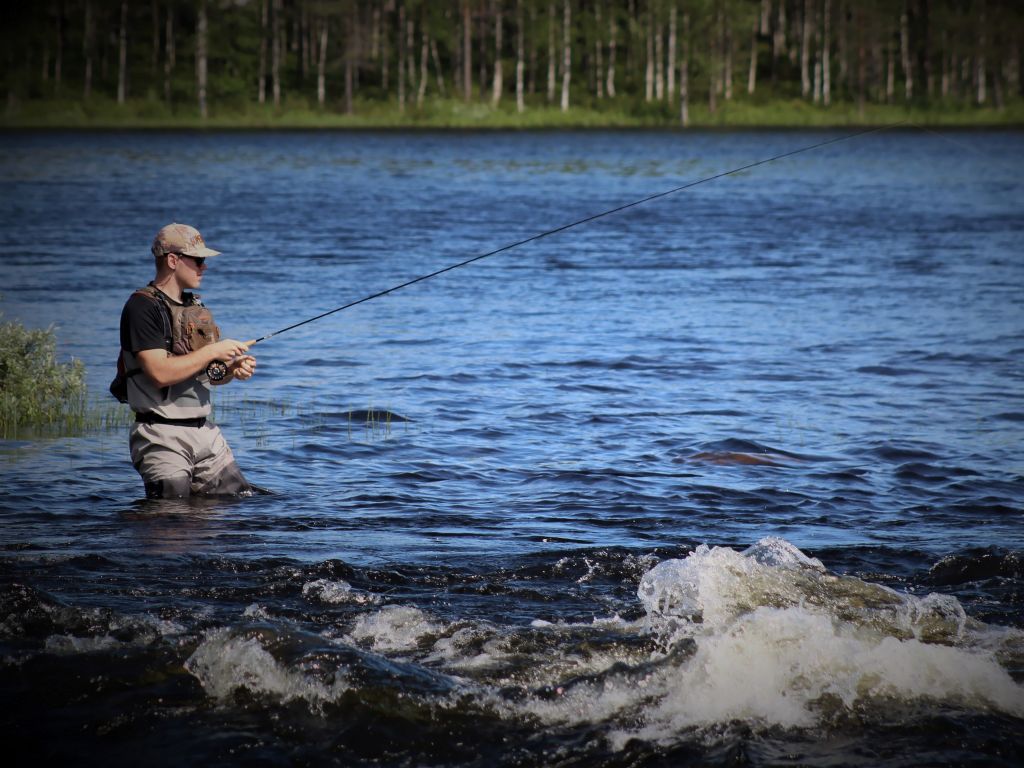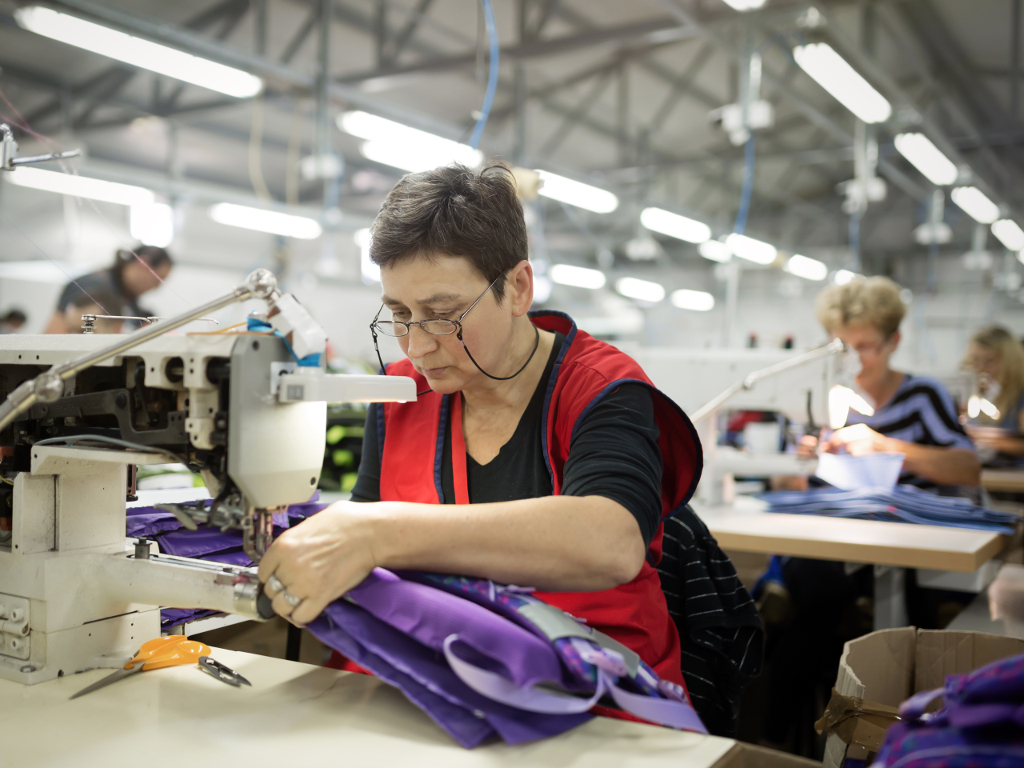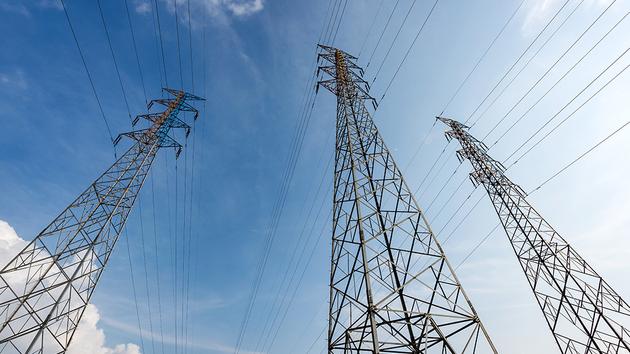Waterproof Clothes and Footwear Pose Danger to Health and the Planet – Five European States Calling for Ban on “The Forever Chemicals” PFASs, What is the Alternative?
Source: eKapija
 Sunday, 26.02.2023.
Sunday, 26.02.2023.
 12:31
12:31
 Sunday, 26.02.2023.
Sunday, 26.02.2023.
 12:31
12:31
Harmful substances are impossible to escape – they’ve been detected in the blood of polar bears in the Arctic and the dung of penguins in Tierra del Fuego (Photo: Unsplash/Anne Nygard)

Although the producers of such clothes emphasize that their use is absolutely safe for people and the environment, there is increasingly more information about the harmful effects of waterproof coatings. The main culprit are substances known as PFASs. “The Forever Chemicals”, as they are called, enter bloodstreams, pollute the ground, and there is increasingly more evidence that they also have a negative impact on people’s health.
These are all reasons why, at the beginning of the year, five European states called for a ban on PFASs, which could come into effect in 2026 at the earliest. If this proposition is adopted, it would be one of the most revolutionary restrictions of chemicals in the history of the EU, professor Dr. Maja Radetic of the Textile Engineering Department of the Faculty of Technology and Metallurgy, points out for the eKapija portal.
She reminds that, for years now, per- and polyfluoroalkyl substances (PFASs), which are extremely stable, have been used in the production of waterproof clothes and footwear. According to her, more than 4,000 of various compounds are used in the textile industry for the impregnation of textile materials in order to produce water- and oil-resistant clothes or for the production of special membranes such as Gore-Tex or Teflon.
– Environmental pollution occurs in the production phase due to the pouring out of waste waters, during the exploitation of the clothes, whether through the evaporation of certain component, or when washing impregnated clothes, and finally, after the use, when the clothes most frequently end up in landfills. The majority of PFASs are not dissolved during conventional waste water treatments. They are partially retained in the sludge left over from the treated waste water, and that sludge has a high nutrient content, so it is frequently used as agricultural fertilizer. This is how the ground and ground waters are polluted, and then they are also accumulated in the plants we use as food – points out professor Dr. Maja Radetic.
Our interviewee notes that a part of PFASs enters the waterflows, circulating throughout the planet. When they end up in nature, they disintegrate with great difficulty, if at all, because the chemical bond between carbon and fluorine is extremely strong.
– That is why traces of these substances can be found in the most remote locations on the Earth, from great ocean depths to the snow in the Alps. Research has shown that these substances have also been detected in the blood of polar bears in the Arctic and the dung of penguins in Tierra del Fuego – reminds professor Dr. Maja Radetic.
Ban on PFASs in EU could come into effect in 2026
It is precisely due to the increasing evidence of the harmfulness of these substances that five European states (Netherlands, Germany, Denmark, Norway and Sweden) have sent a proposition to the European Chemicals Agency (ECHA) to ban the production, use and sale of around 10,000 PFASs in the EU. ECHA estimates that, if we continue as before, 4.4 million tons of PFASs will enter the environment in the next 30 years. The states are not to deliberate on the proposition before 2025, and if it is adopted, the ban will not come into effect before 2026.
– PFASs have a very harmful impact on the endocrinological, immune and reproductive systems, and studies have shown that excessive exposure to these substances can have as a consequence the development of cancer (of testicles and kidneys). Employees in clothes manufacture or in clothes stores are at a special risk of getting sick. However, communities which live in the areas around the factories, clothes consumers and waste collectors are also jeopardized. We introduce them to the organism by breathing in the air contaminated with these substances, but also through food – points out professor Dr. Maja Radetic.
Production employees are at a special risk of getting sick (Photo: nd3000/shutterstock.com)

As she says, it has been confirmed that PFASs have been detected in meat, milk, fish, plants, and even in grains grown on contaminated soil. Drinking water is also a problem.
– It is especially frightening that not even small children, including newborns, are spared from being exposed to these compounds. Traces of PFASs have been detected in mothers’ milk. They can also accumulate in the placenta and if they pass the placental barrier, they have a direct impact on the development of the embryo. PFASs have also been detected in the newborns’ umbilical cord blood – warns professor Dr. Maja Radetic.
What do producers say – Consumers to blame again
As expected, this information is not mentioned by the producers of either waterproof clothes and footwear or the membranes that are used for the impregnation of textile materials. One of the most famous producers, Gore-Tex, says on its website that the use of clothes and footwear with these membranes is a good ecological choice because these are durable clothes that, because they last so long, reduce the use of natural resources and waste.
Although this argument makes sense, the question remains where all these products end up when we stop using them. Since recycling is not possible, it is clear that these clothes most often end up in landfills or incinerators. Gore-Tex, on the other hand, shifts the blame onto consumers. According to them, back in 1993, they introduced a recycling program for clothes with a Gore-Tex membrane, but they soon realized that consumers are not ready to return pieces of clothing even after years of use, so the program was canceled.
– The recycling of textile materials impregnated with PFASs is practically impossible, because they are difficult to remove from textile fibers. The recycling of these materials would lead to an uncontrolled exposure to “the forever chemicals”, because they would be hard to trace so that recycled fibers would end up in numerous new products along with PFASs. It’s not just a problem to recycle clothes, but also all products which feature have these compounds. One of the offered solutions is controlled waste incineration. However, there are still many uncertainties, including what is in fact emitted into the air from the incinerator when PFASs are burned and whether the incineration process creates new PFASs – warns professor Dr. Maja Radetic.
Do we really need to wear waterproof jackets every day?
PFASs are not just used in the production of waterproof clothes and footwear. They have a wide application – in the production of cooking pans, food packaging, cosmetics industry. That is why it’s no wonder that the industry has been lobbying for a long time against the proposal to ban PFASs in the EU, which entails the ban on the entire complex group of PFASs, whereas the chemical industry is calling for a narrower definition and emphasizing that not all of them need to be regulated the same way.
Consumers also play a big role because they choose what to wear (Photo: Unsplash/Toomas Tartes)

The interviewee of the eKapija portal points out that, considering the negative impact of PFASs on the environment and people’s health, their application in clothes production should be reconsidered. According to her, as consumers, we also play an important and very responsible role, because we choose what to wear.
– Jackets and raincoats which don’t contain PFAS membranes can protect us quite effectively in everyday use. Do we really need to wear clothes that don’t get dirty, or is it better to eliminate PFASs and wash our clothes more frequently? By developing awareness of the harmfulness of these substances, I believe that the choice will be to eliminate the clothes impregnated with PFASs – says professor Dr. Maja Radetic.
And while the EU is yet to discuss the subject, in the USA, the use of PFASs is to be regulated this year in several states. The ban in Maine came into effect first and it pertains to the use of PFASs in carpets and factory treatments, with a perspective to ban the use of these substances in all fields by 2030, except where necessary. However, that also leaves a lot of uncertainties.
– Recently, a regulation was adopted in California which envisages the ban on the production, distribution and sale of clothes with PFASs from 2025. Special-purpose protective clothes for laboratories will be exempt. Experts have a dilemma whether the brands which still use PFASs in their production process will redirect their products to markets outside California or stop using these substances. The adoption of a similar regulation is expected in New York, except that it is more aggressive, because it is supposed to come into effect on the last day of 2023. That narrows the space for producers, traders and everybody else who participates in seeking alternative solutions, developing new materials and testing their performances, but also their acceptability for the customers, as well as for the commercialization of the products. The development of alternative materials is a long, expensive and often uncertain process – our interviewee notes.
Still, there are also those who, despite the obstacles, are trying to find alternatives. The fashion brand Patagonia, known for the production of clothes for mountaineering and other outdoor sports, does not hide that it is spending a lot of time, energy and money in order to find PFAS-free alternatives which would be of equal durability and quality. According to their website. In the spring of 2023, as many as 66% of waterproof materials will not feature PFCs (a term they use because it is more recognizable, but which also pertains to PFASs, as they point out). The aim is for all products to be fully PFC- and PFAS-free by 2024.
On the other hand, Gore-Tex has also announced that it plans to eliminate PFCs from its production. The initial goal was set for the end of 2023, but as they explain on the company’s website, that will not be possible, so a new goal has been set for the end of 2025.
The way this is phrased is interesting, however – Gore-Tex plans to eliminate only “PFCs of Environmental Concern”. Not all PFCs are cause for concern, definitely not PTFE, which is fully safe, the company says, which experts would not agree with.
Not all natural materials are sustainable either
When it comes to less harmful, and equally durable, alternatives, our interviewee points out that, for a while, PFASs with a shorter carbon chain were used, but it has turned out that these compounds are also harmful to people’s health and the environment.
– Compound based on paraffin waxes, silicones, silanes, siloxanes and polyurethanes can be alternatives for PFASs in the production of waterproof textile materials. However, even with their implementation, one should be careful and make a good assessment of their real overall impact on the environment. Excellent effects can be achieved with thick weaving without the use of chemicals – points out professor Dr. Maja Radetic.
While scientists are seeking alternatives to synthetic materials which are targeted by environmental activists because they are made from fossil fuels, it shouldn’t be forgotten that not all natural materials are sustainable either and that there are fields where there the use of synthetic fibers is paramount.
– A complex topic thereby opens, which pertains to an estimate of the life cycle of a textile product. Many textile products are based on natural fibers, but they are subsequently modified so as to get the required usage characteristics, whereby perhaps some of their native positive characteristics from the environmental protection aspect are compromised. There are fields where synthetic fibers are paramount. A good example are Nomex or Kevlar fibers, which are used in the production of fireproof protective clothes – concludes professor Dr. Maja Radetic.
M. Dedic
Companies:
 Tehnološko metalurški fakultet Beograd
Tehnološko metalurški fakultet Beograd
Tags:
Gore Tex
Patagonia
European Chemicals Agency
ECHA
Maja Radetić
Textile Engineering Department
fashion industry
PFAS
the forever chemicals
waterproof clothes
waterproof footwear
waterproof membrane
alternative to Gore Tex
PFAS replacement
sustainable materials
water resistant materials
Nomex
Kevlar
protective clothes
Comments
Your comment
Most Important News
Full information is available only to commercial users-subscribers and it is necessary to log in.
Follow the news, tenders, grants, legal regulations and reports on our portal.
Registracija na eKapiji vam omogućava pristup potpunim informacijama i dnevnom biltenu
Naš dnevni ekonomski bilten će stizati na vašu mejl adresu krajem svakog radnog dana. Bilteni su personalizovani prema interesovanjima svakog korisnika zasebno,
uz konsultacije sa našim ekspertima.


 Izdanje Srbija
Izdanje Srbija Serbische Ausgabe
Serbische Ausgabe Izdanje BiH
Izdanje BiH Izdanje Crna Gora
Izdanje Crna Gora


 News
News










